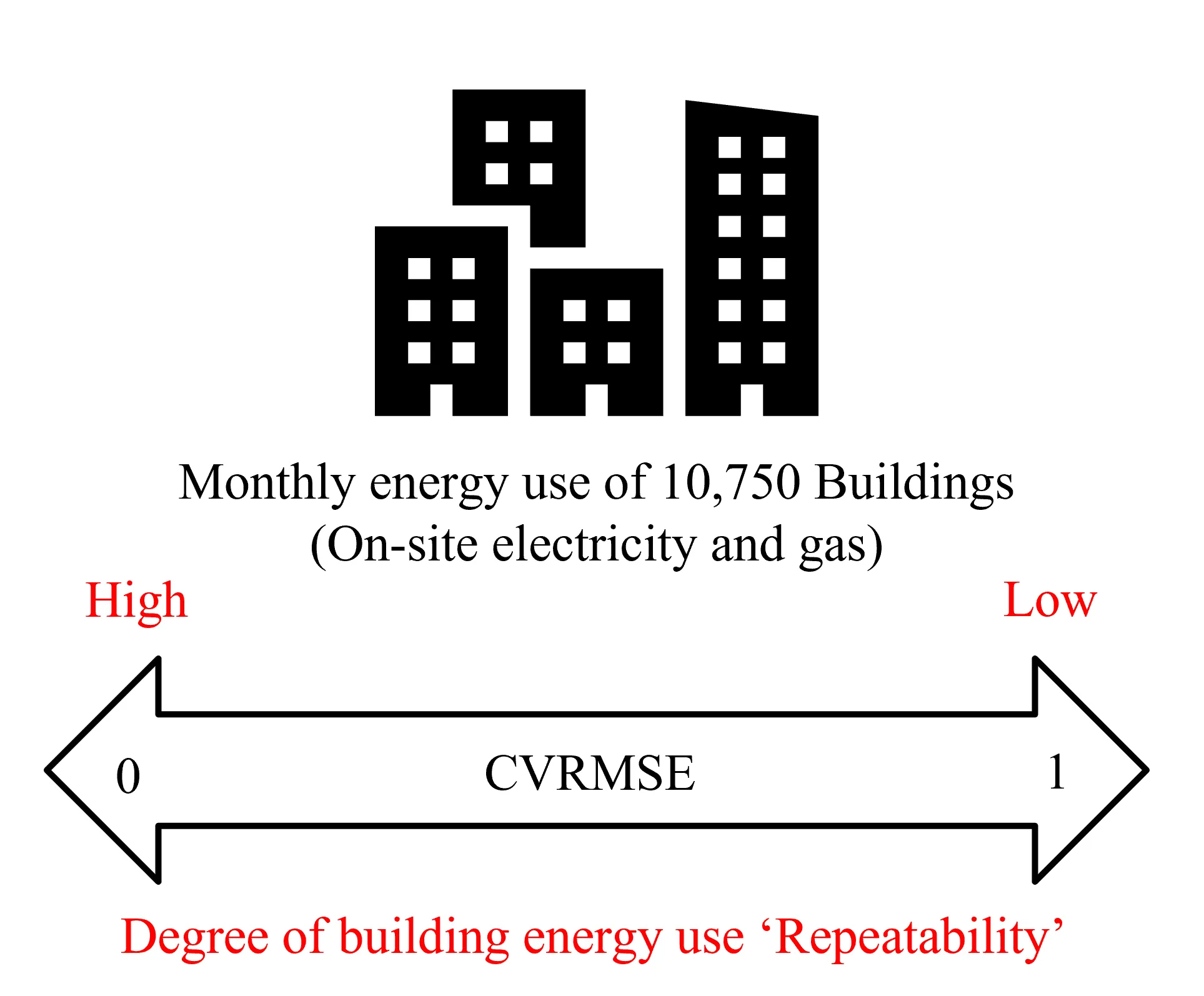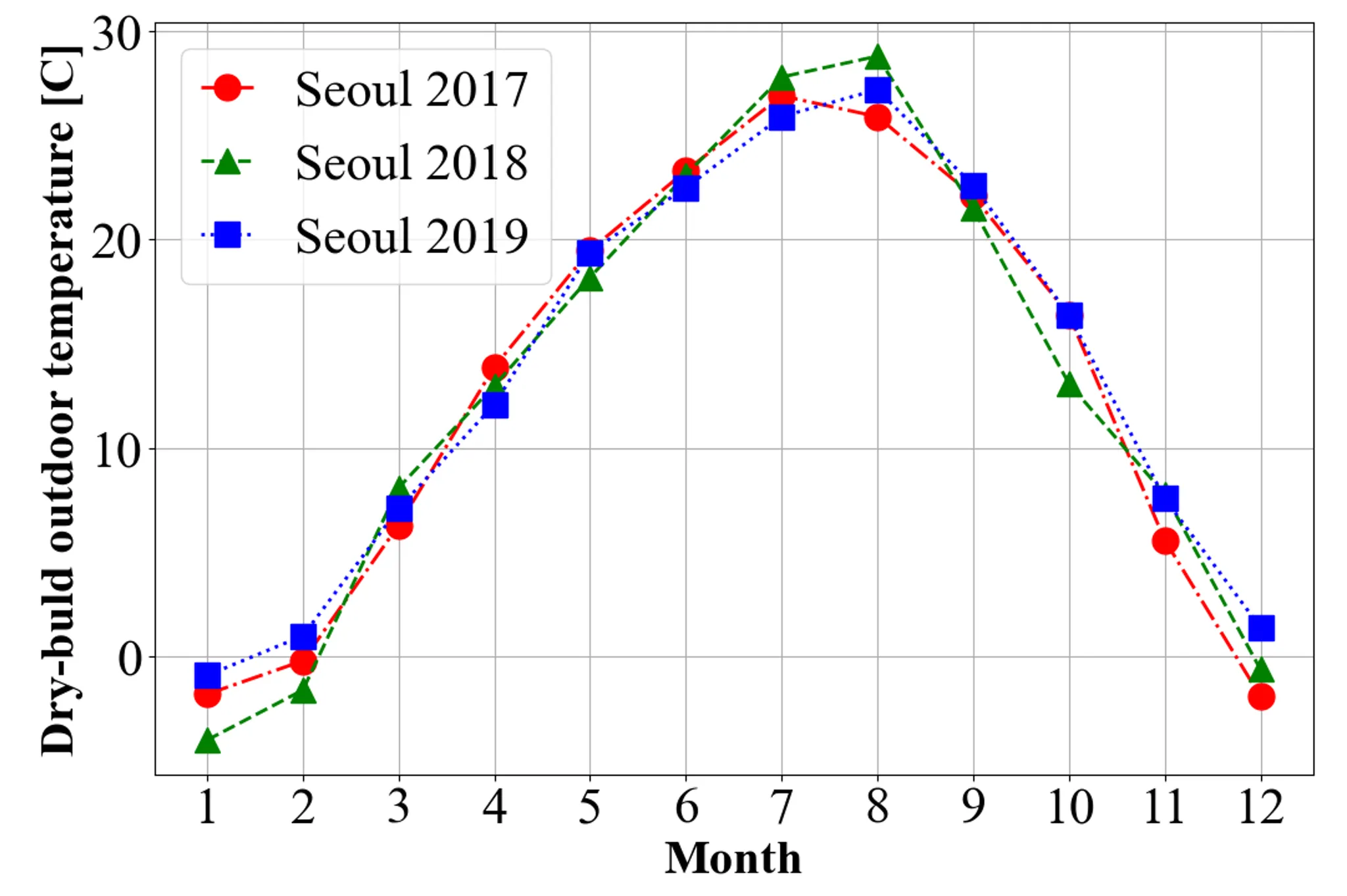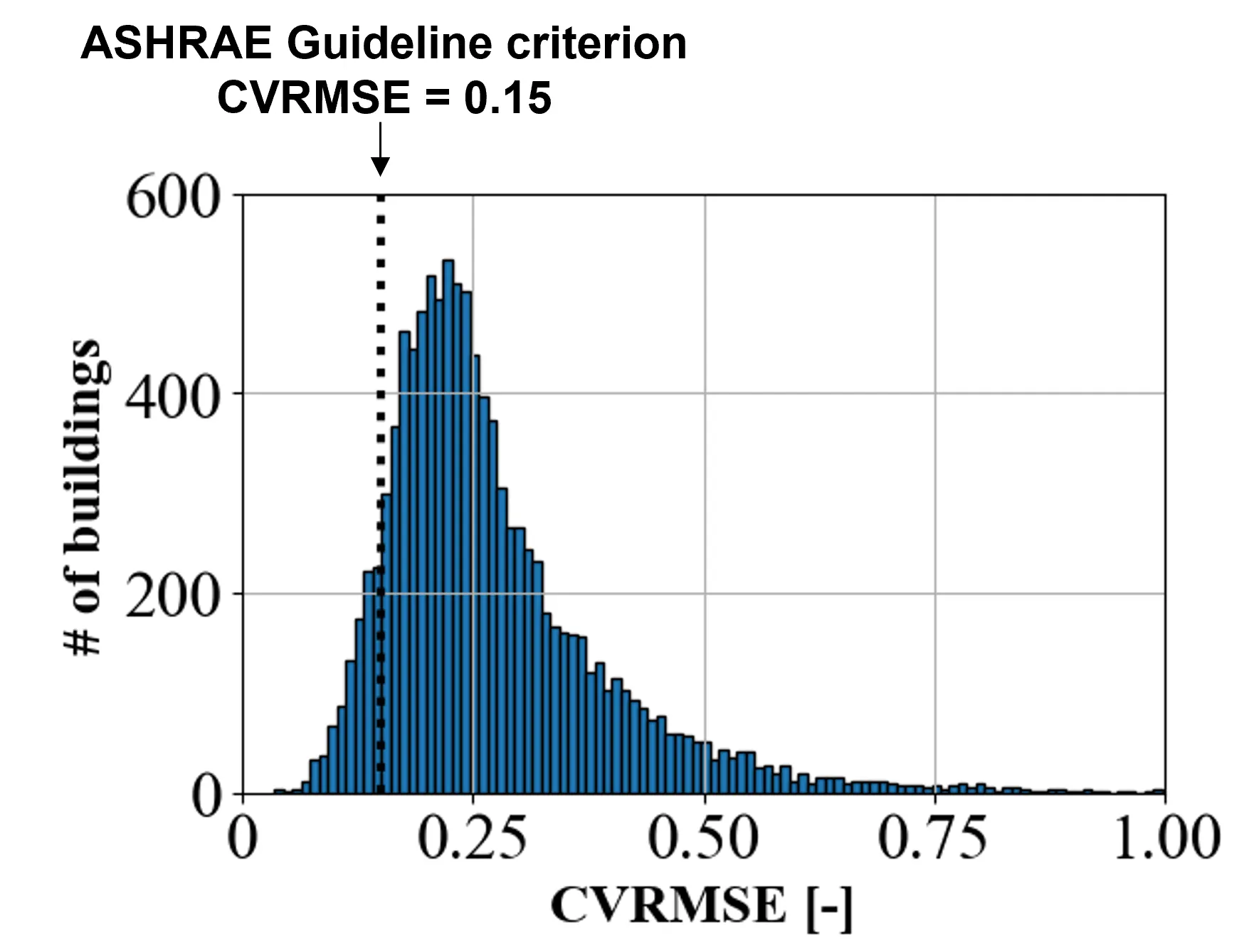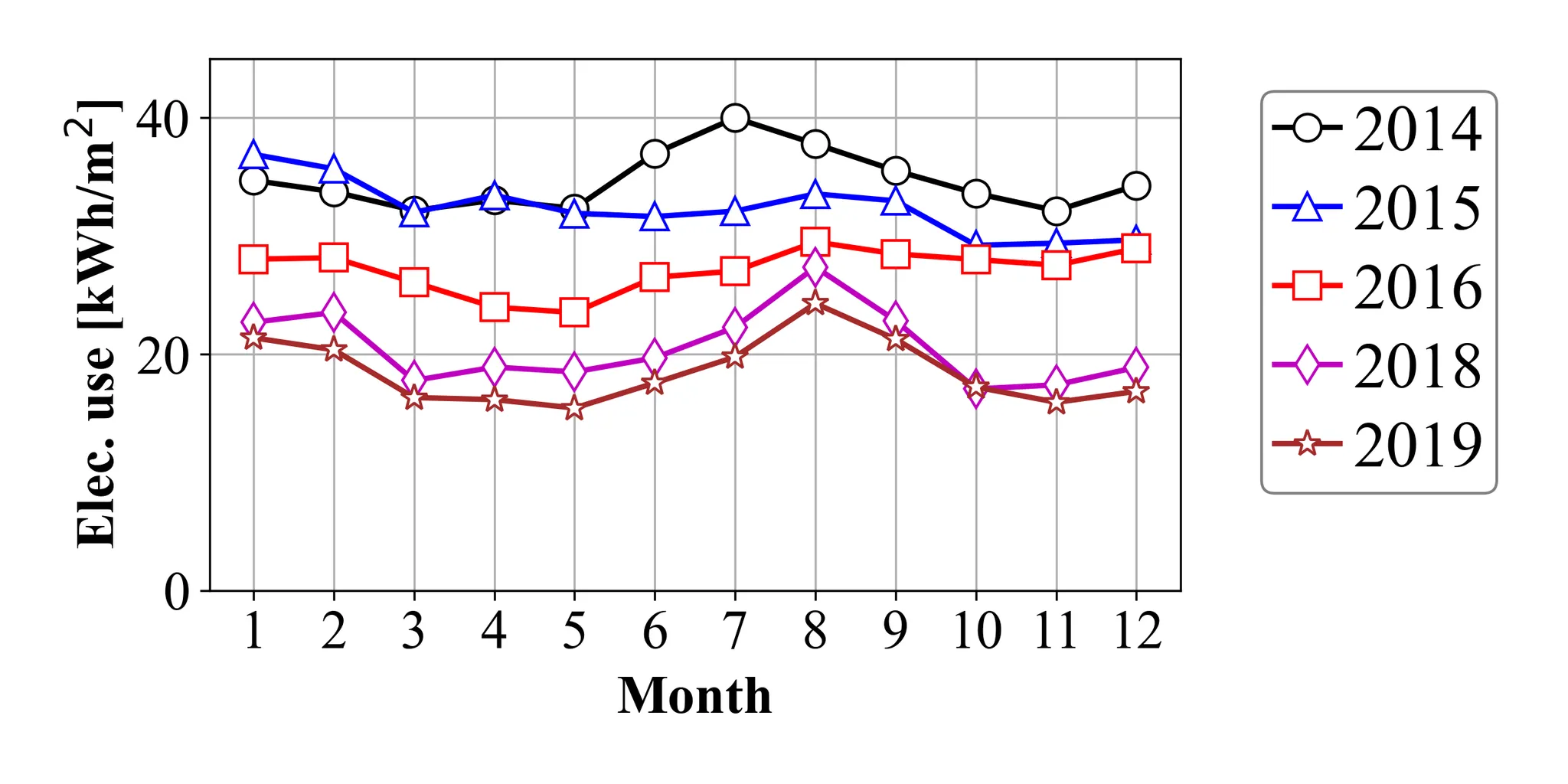•
Abstract
Although numerous studies have been conducted on performance gap between predicted and measured energy uses, there is a significant lack of evidence regarding whether monthly energy use of each building repeats over time. This study aims to evaluate the repeatability of monthly energy use of 10,750 buildings for three years (2017-2019). It is assumed that the higher CVRMSE of building's monthly energy use between a pair of years is, the less repeatable a building is, leading to being less predictable. K-means algorithm was used to extract representative energy use patterns of the buildings, and four energy use patterns were identified. It is noteworthy that 9,760 (90.8%) buildings do not satisfy the monthly criteria of ASHRAE Guideline 14 (CVRMSE=0.15), which means their three years' monthly energy use pattern do not repeat. This signifies that it might be difficult to predict the energy use of those buildings. In addition, it was found that there is a distinct difference of CVRMSE (i.e., the degree of unpredictability) among four energy use patterns (0.27, 0.28 vs. 0.38, 0.40 on average), whereas there is little difference among seven building use types (0.27-0.31 on average).
•
Metric to quantify repeatability of monthly building energy use
•
How repeatable is dry-bulb outdoor temperature of Seoul, South Korea?
◦
The average CVRMSE of all pairs of three years is 0.13, meaning that the outdoor temperature of these three years are relatively repeatable.
•
How repeatable are monthly energy use of 10,750 buildings?
◦
Only 990 (9.2%) out of 10,750 buildings meet the monthly calibration criteria of ASHRAE Guideline 14 (CVRMSE ≤ 0.15) for three years.
▪
For the other 9,760 buildings, even if a building energy model is validated on a 12-month basis, its performance cannot be guaranteed for next several years.
◦
Sample building
•
How much the degree of repeatability varies according to the use types and the clusters (energy use patterns found in this page)?
◦
There is no statistically significant difference ) in the average CVRMSE of the distributions of (a) the use types (the avg. CVRMSE are between 0.27 and 0.31), while the meaningful difference was found in those of (b) the energy use patterns (the avg. CVRMSE are between 0.27 and 0.40).
◦
It was found that the energy use of the buildings using gas for cooling (Cluster #3 and #4) are less repeatable and it could be more difficult to predict building energy use of these buildings.





